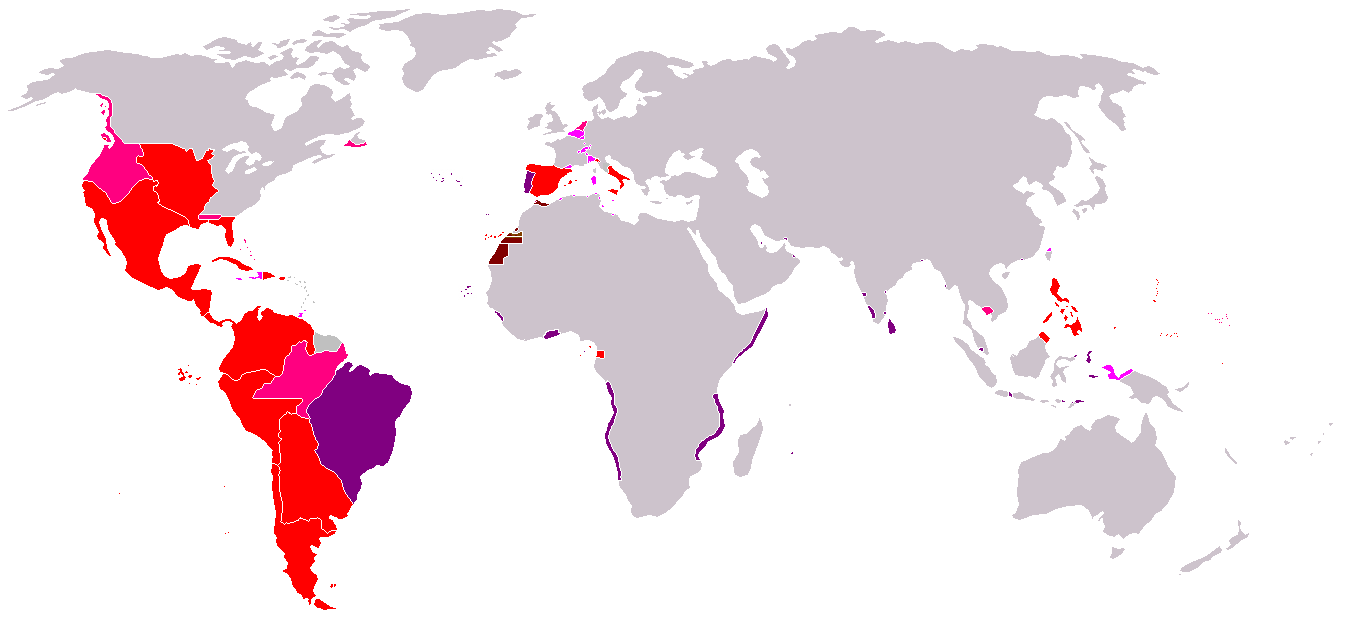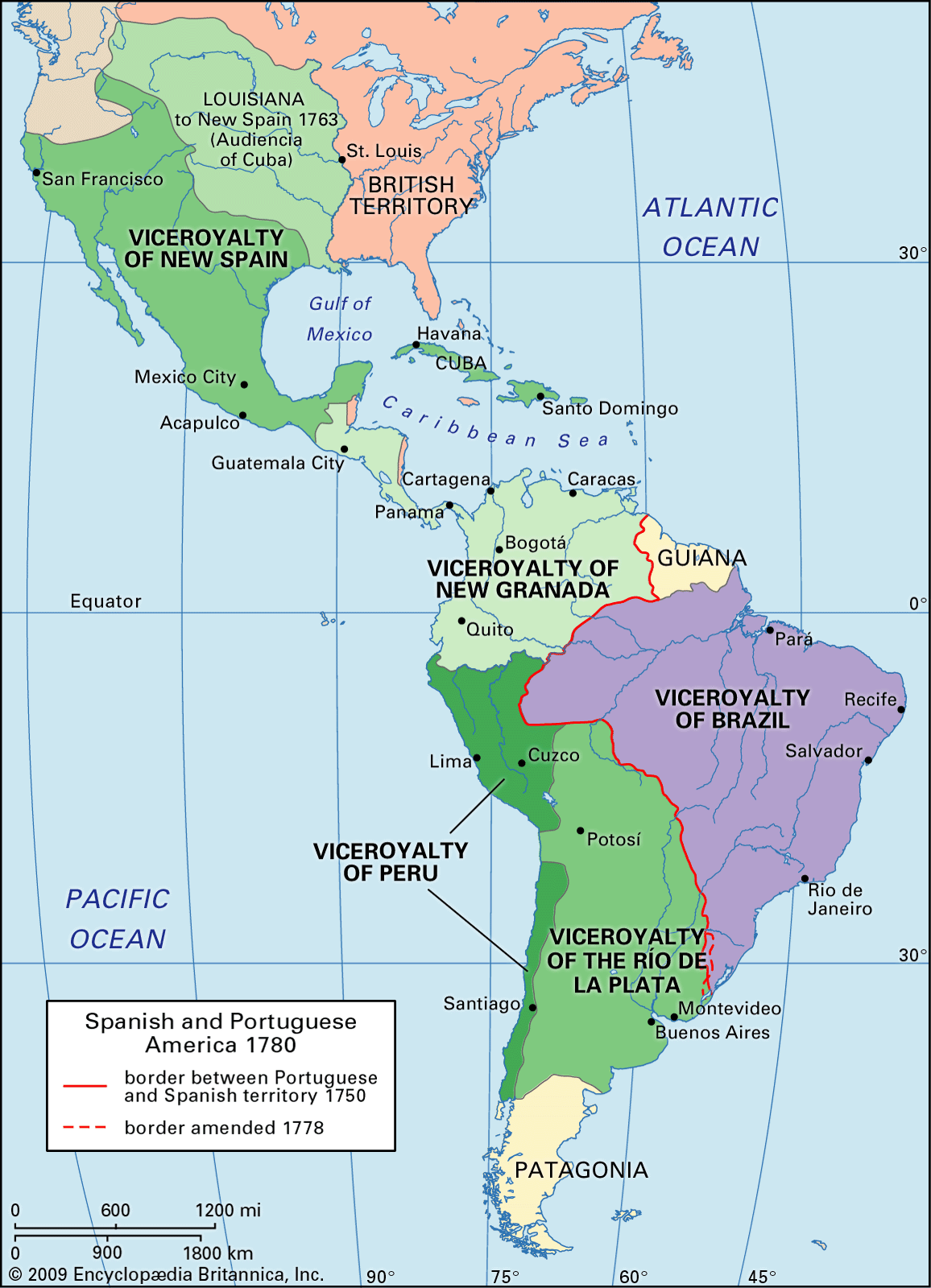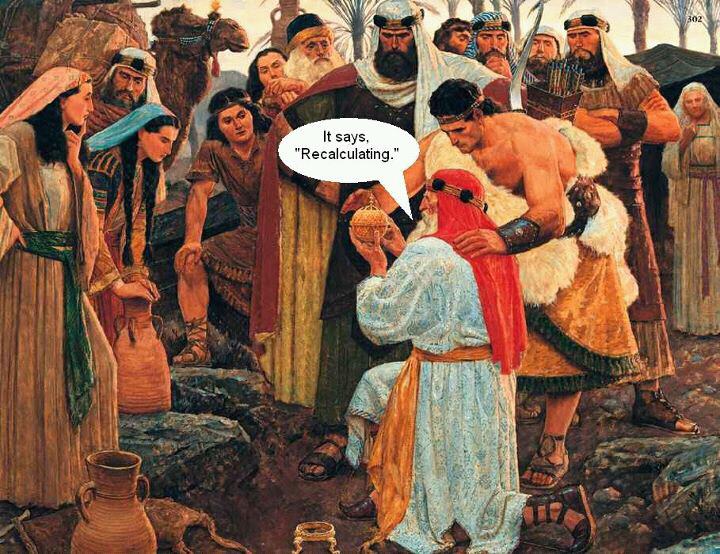This is one of a series of posts examining apparent chapter divisions within the original Book of Mormon manuscript as they apply to Nephi’s writing — here is the introduction and here is the previous post. (The entire list can be found here.)
Longer Book of Mormon quotes here, as for the entire series, are taken from The Book of Mormon: The Earliest Text (Royal Skousen, ed.), though links will be to the modern version.
As mentioned previously, Nephi makes a couple of references about these (small) plates discussing his “reign and ministry”. Last week, we saw what appeared to be the start of Nephi’s ministry; this week, we’ll see the start of Nephi’s reign, though perhaps a more modest “reign” than we might imagine. I’ll note here that while Nephi says he is writing about his “reign”, he seem very uncomfortable with the title of “king” (cf. 2 Nephi 5:18), probably because of his readings in the brass plates (cf. 1 Samuel 8:4-9).
Chapter V: The 2nd Exodus, with Nephi As Moses
First Nephi IV was a relatively short chapter, both in length and in chronology, most of which was about Nephi acting as a prophet and spiritual leader to his brothers, largely in the space of two conversations. By contrast, First Nephi V is quite a long chapter. It covers nearly eight years of time and most of their journey, from the time that Lehi’s party leaves their first camp in the valley of Lemuel until they arrive in the Americas. It comprises a series of set pieces underscoring Nephi’s growing leadership of this group, as his brothers rebel and even his father falters, both spiritually and physically.
More than anything else, Chapter V is about Nephi setting forth parallels with the story of Moses leading Israel across water and through wilderness to the promised land, with Nephi largely in the role of Moses. This is, of course, a long-established observation about Nephi’s writings, and one that has been covered repeatedly by better and more knowledgeable scholars than I. What is interesting, though, is to see how much of this is packed into a single chapter, namely this one.
One of the earliest and best articles on the parallels between Nephi’s account and the Exodus led by Moses out of Egypt is “Nephi and the Exodus” by Terrence L. Szink, printed in Rediscovering the Book of Mormon (Sorenson & Thorne (eds.), Deseret Book/FARMS, 1991, pp. 38-51). After noting Nephi’s frequent overt references to Moses and the Exodus, Szink draws the following parallels in Nephi’s own account — all of which, by the way, appear in Chapter V (the titles are Szink’s):
- “The Voice of Murmuring in the Wildnerness”: not just the act of murmuring itself, but also that a specific instance was tied to lack of food, which was subsequently provided with divine help.
- “Reasonable Fears and Foolish Desires”: the respective wandering groups fearing death in the wilderness and wishing to return to their prior lives — even though it meant slavery in Egypt and death or captivity back in Jerusalem.
- “The Liahona and the Serpent”: in both cases, a bronze object that yielded miraculous results, yet that at times was ignored “because of the simpleness of the way” of using it.
- “Lead, Kindly Light”: the stricture that the Lord would lead them through the wilderness; in Nephi’s case, with the Lord explicitly saying, “I will also be your light in the wilderness and will prepare the way before you.”
- “High on a Mountaintop”: Moses ascending Sinai, and Nephi ascending the mountain at Bountiful, both times to receive divine instructions on leading their respective parties, and in particular detailed instructions on constructing a physical object (the ship and the Tabernacle) that would be essential to the group’s on-going progress.
- “Nephi’s Powerful Sermon”: both Nephi and Moses coming down from the mountaintop encounter with God with great power, such that the members of their respective parties feared to approach them.
- “Two Parties, Too Wild”: the celebrations and orgies surrounding the golden calf, and the dancing and singing “with much rudeness” on board the ship, with the threat of divine destruction and death following each.
Finally, here are a few additional thoughts of my own.
Appearance of a Divine Artifact Containing Commandments from God
The brass ball, or compass, is the third of three tangible objects (the others being Laban’s sword and the brass plates) that will be a source of contention between the Nephites and Lamanites and that likely will lead to the Lamanite traditions of the Nephites being robbers (cf. Alma 20:13). Unlike the first two, however, it was not taken from Jerusalem but miraculously appears outside Lehi’s tent and marks the start of the rest of the journey. Indeed, it appears that it was essential for that journey and may well have come in answer to Lehi’s prayer as to where to go next.
While Tzink rightly compares the brass ball to the brazen serpent, I think there is also a valid comparison to be made between the ball and the stone tablets containing the Decalogue. Both have miraculous writing direct from God, though that on the ball changes “from time to time” (1 Nephi 16:29). And in both cases, the artifact travels with the party and remains as a memorial of the time in the wilderness.
Over the course of Chapter V, three usages of the ball document an apparent transfer of authority from Lehi to Nephi:
- At first, Lehi (by implication) is using it to find “whither we should go in the wilderness.”
- When the food crisis hits, and even Lehi murmurs, Nephi asks his father to seek guidance from the Lord; part of that comes via the ball, and Nephi follows those directions to find food.
- On the ocean voyage, when Nephi is bound, the compass “did cease to work”; Lehi, by implication, is unable to make it work, though it sounds as though Lehi may have been incapacitated by a combination of old age and seasickness. It is only after Nephi is freed that the compass once again works.
The big difference, of course, is that the ball — unlike the stone tablets containing the Decalogue — is not gained by ascent to a mountain where God’s presence resides; instead, it appears outside Lehi’s tent one morning. However, that in itself is still miraculous, since the ball was “of curious workmanship” and “of fine brass”, and yet there were no facilities for making such a device there in the wilderness; note that when Nephi breaks his steel bow, he is forced to craft a new one from wood. It is not until Lehi’s party reaches Bountiful several years later that Nephi is able to find and refine some iron ore for tools.
Prolonged Wandering in the Wilderness
One of the most pointed asides in all of scripture is found at the start of Deuteronomy (emphasis mine):
(There are eleven days’ journey from Horeb by the way of mount Seir unto Kadesh-barnea.)
And it came to pass in the fortieth year, in the eleventh month, on the first day of the month, that Moses spake unto the children of Israel, according unto all that the Lord had given him in commandment unto them
The point being, of course, that it took the Israelites 40 years to cover a distance that could be traveled in a few weeks. In much the same way, Nephi follows the story of rebellion and threatened patricide — even though followed by divine intervention and repentance — with a terse account of long and difficult wanderings in the wilderness:
And it came to pass that we did again take our journey [from Nahom] in the wilderness.
And we did travel nearly eastward from that time forth.
And we did travel and wade through much affliction in the wilderness,
and our women bare children in the wilderness.
And so great was the blessing of the Lord upon us
that while we did live upon raw meat in the wilderness,
our women did give plenty of suck for the children and were strong,
yea, even like unto the men.
And they began to bear their journeyings without murmuring.
…
And we did sojourn for the space of many years,
yea, even eight years in the wilderness.
Just as Deuteronomy notes that it’s only an eleven-day journey from Horeb to Kadesh-Barnea, an examination of a map shows that the distance from the apparent location of Nahom to any of the proposed locations for Bountiful is on the order of 700 miles (with the total trip from Jerusalem to Bountiful being on the order of 2000 miles). Even at a modest 8 to 10 miles/day, that’s only about three months’ worth of travel to cover 700 miles, yet it took Lehi and his party something approaching eight (8) years to make it to Bountiful (Nephi’s comment above leaves it unclear as to whether the “eight years” is the time from leaving Jerusalem, from leaving the valley of Lemuel, or from leaving Nahom).
Nephi documents one case in this chapter when, while crossing the “great waters”, the ball stops working due to Laman and Lemuel’s rebellion. But there were apparently other times during the entire journey when the ball stopped working; as Alma2 says to his son Helaman1:
Nevertheless, because those miracles were worked by small means
— nevertheless it did shew unto them marvelous works —
they were slothful and forgat to exercise their faith and diligence.
And then those marvelous works ceased,
and they did not progress in their journey.
Therefore they tarried in the wilderness,
or did not travel a direct course,
and were afflicted with hunger and thirst because of their transgression.
It could be that Alma2 is referring to the “broken bow” incident that Nephi chronicles in this chapter, but he seems to be describing something more significant than that. My suspicion is that the (lost) book of Lehi contained a lot more details about the journey to Bountiful, particularly from Nahom to Bountiful. As noted above, Nephi covers that part of the trip in just a few lines.
S. Kent Brown makes a credible argument that Lehi and his party may have passed much of that time in servitude to a local tribe somewhere in that wilderness in exchange for food and/or protection.[1] If that is the case, then Nephi may have avoided discussing that directly, since it would undermine the Exodus parallels to have Lehi’s party going into slavery (as it were) rather than escaping from it.
Arrival in the Promised Land After Crossing Water, with Promised Blessings and Cursings
While Tzink notes the parallels between Moses parting the Red/Reed Sea and Nephi leading his family over the intervening ocean via ship, I believe there is another parallel as well, namely that of the children of Israel crossing the Jordan River into the promised land. In both cases, the Lord promises blessings to those who keep His commandments and cursings to the point of destruction for those who do not.
Nephi concludes this chapter by recounting the making of the ‘large’ plates, as well as a foreshadowing of the coming of the Messiah — the same future “prophet” that Moses spoke of. He ends with his own testimony of the scriptures, including those which he himself has now written:
And I Nephi have written these things unto my people
that perhaps I might persuade them
that they would remember the Lord their Redeemer.
Wherefore I speak unto all the house of Israel,
if it so be that they should obtain these things.
For behold, I have workings in the spirit which doth weary me,
even that all my joints are weak,
for they which are at Jerusalem.
For had not the Lord been merciful
to shew unto me concerning them
even as he had prophets of old —
for he surely did shew unto prophets of old all things concerning them.
And also he did shew unto many concerning us;
wherefore it must needs bet hat we know concerning them,
for they are written upon the plates of brass.
Next post: Nephi starts quoting Isaiah.
[1] “Sojourn, Dwell, and Stay: Terms of Servitude”, Chapter 4 in From Jerusalem to Zarahemla, S. Kent Brown (Religious Studies Center, BYU, 1998).


